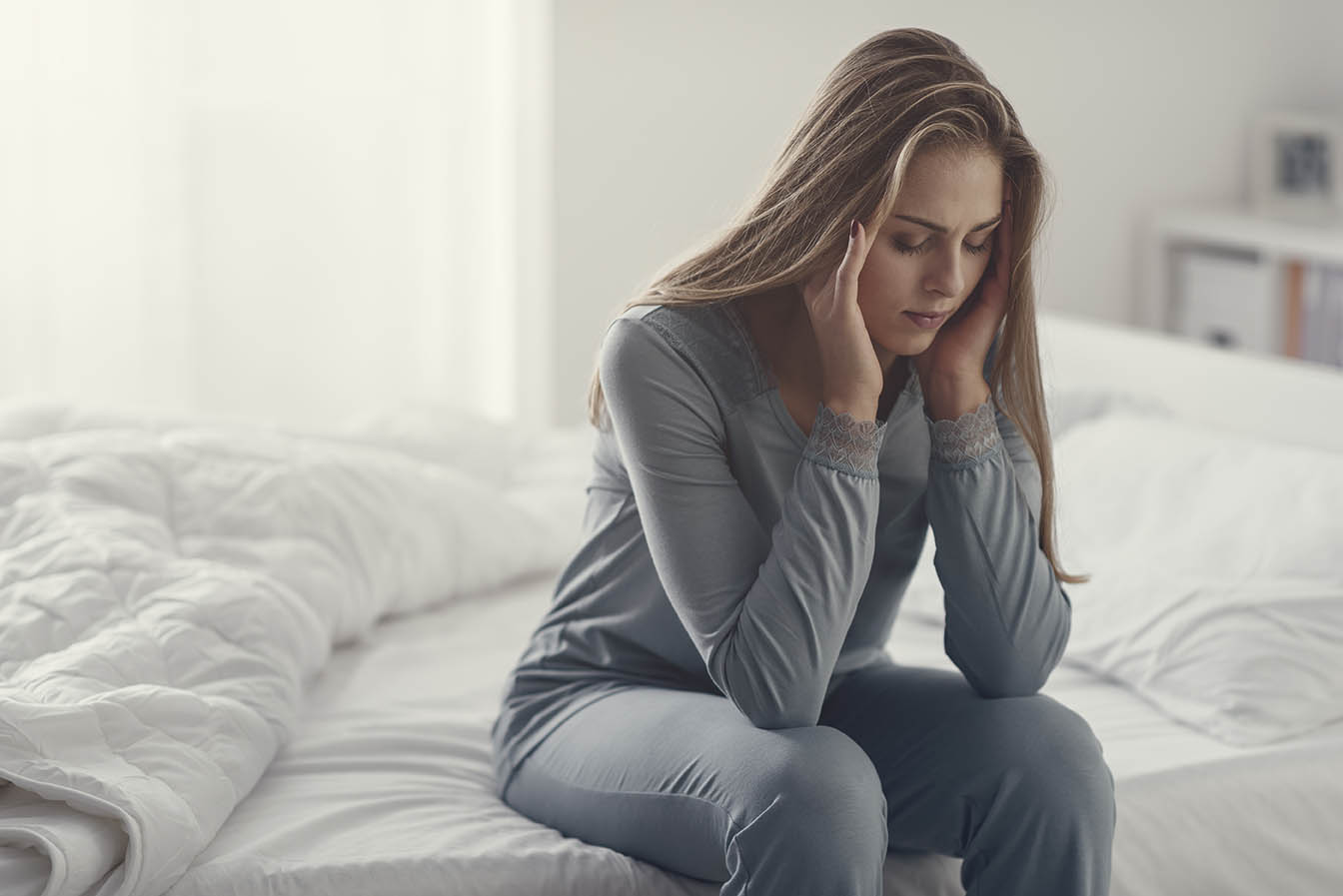Seasonal affective disorder (or SAD) affects many of us, as our energy levels undergo a gradual change from summer to autumn. Dark, chilly mornings make it harder to get out of bed, and it’s common to feel more lethargic and crave comforting foods as we adjust to the change in seasons.
What is SAD?
Seasonal Affective Disorder is caused by seasonal light changes, and the effect that this has on the part of the brain that regulates a whole range of bodily functions.
The nerve centres in the brain, which control our daily rhythms and moods, are stimulated by the amount of light entering the eyes. During the night, a gland in the brain called the pineal gland produces melatonin, which makes us drowsy and suppresses the production of the feel-good hormone serotonin.
At daybreak, natural light stops this process – but on dull days there’s not enough light to do so. As a result our body’s natural clock, known as our circadian rhythm, becomes disrupted.
Many people affected by SAD start to notice symptoms around the time that the clocks go back and the days get shorter.
People who live in Scotland or the North of England, where there is even less sunlight during the winter, are more likely to be affected, and symptoms tend to be worse when we’ve had a particularly bad winter following on from a dull, wet summer.
What are the symptoms of SAD?
Typical symptoms of Seasonal Affective Disorder include:
• sleep problems (too much or interrupted sleep)
• lethargy
• overeating
• depression
• social withdrawal
• anxiety
• difficulty with concentration and memory
• loss of libido and mood changes.
Unlike depression, SAD is only an issue during the winter months, with most people experiencing a rapid reduction in symptoms when spring arrives and the clocks go forward.
SAD can be hard to define and diagnose. For that reason, symptoms are viewed on a sliding scale:
Level 1: This makes us overeat, oversleep and feel a bit grumpy. Most people recognise this behaviour in themselves, their friends or their family as we move into winter.
Level 2: This affects people more seriously, and is known as Sub-syndromal SAD. Symptoms include mild depression, sleep disturbance, over-eating and anxiety.
Level 3: This is associated with moderate to severe depression, panic attacks, constant anxiety, aches and pains, withdrawal from social life, loss of libido and an overwhelming need to hibernate.
Men and women of all ages can be affected by SAD, and there have been more reported cases over the last few years due to a run of harsh winters and damp summers. As the causes are environmental, it’s possible to be affected by SAD even if you have never experienced it in the past.
In fact, it’s not unusual for older people to notice symptoms for the first time if they have to spend more time than usual indoors due to health or mobility problems.
How to treat SAD
If you’re experiencing symptoms of SAD, it’s important to visit your doctor who will carry out an assessment to check whether or not you are depressed.
You’ll be asked questions about your mood, your lifestyle and your eating and sleeping patterns.
If you’ve had symptoms for two or more years in a row, and usually feel better when spring arrives, your doctor may diagnose SAD.
Fortunately, SAD can usually be successfully treated, and mild to moderate cases are often managed without medication.
Light box therapy
One choice of treatment is light therapy, which involves sitting in front of a special ‘light box’ which produces very bright light.
You can sit in front of the light for around an hour per day, during which time you can carry on with their normal activities, such as reading, working or watching TV.
The boxes are not available on the NHS, but many companies offer a home trial so that you can check that it works for you before you buy.
Sitting in front of a 10,000 lux bright white lightbox, at a distance of about 14 inches, for 30-60 minutes in the morning should help.
Buyers should make sure that the box is from an approved company and is medically certified for use in SAD.
Exercise and natural light
In mild cases, regular outdoor exercise – such as a daily walk – can be all that’s needed to combat SAD.
Natural daylight, even on a typical British winter day, is better than a lightbox – and exercise is known to make us feel better.
Morning is the best time to get out into the light, especially in winter, as this will improve mood and metabolism throughout the day. Indoor lighting, under which we try to lead normal lives in winter, is just no substitute.

